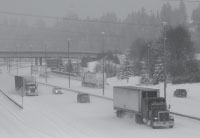
WSDOT has an arsenal of strategies and is adding some innovative tactics to keep mountain passes open during tough weather conditions. |
Links on this Page:
Highway Snow and Ice Removal
WSDOT's Winter Operations
Safe Winter Travel
Your Tire and Chain Options
Traction Advisory
Know Before You Go
Highway Snow and Ice Removal
During the winter months, WSDOT maintenance crews work around the clock to keep highways drivable and traffic moving by using salt and anti-icing compounds, or sand when temperatures fall too low for chemicals to work. Supervisors check weather reports and move equipment, materials, and personnel where needed most.
WSDOT crews start anti-icing and snow removal on heavily traveled state routes, clearing the far right lanes first. Initial efforts are on areas where drivers are most at risk: hills, curves, ramps, bridges and interchanges. It takes time to complete the work, especially if the storm conditions continue to produce low temperatures, ice, freezing rain and snow.
No one can guarantee ice and snow-free roadways, so motorists must always be cautious when driving in wet and cold weather. Remember, Ice and Snow, Take it Slow.
WSDOT's Winter Operations
WSDOT operates several Traffic Management Centers (TMC's) 24-hours-a-day, seven-days-a-week, 365-days-a-year. In the winter, an additional TMC is added at Snoqualmie Pass. At the TMC's, engineers and dispatchers have the tools and technology to manage and dispatch winter roadway crews where they are needed most. They view traffic cameras, monitor Washington State Patrol radio and post information on the overhead freeway signs, highway advisory radio, and the 5-1-1 travel information line.
During significant and long-term storm events, WSDOT operates several Emergency Operation Centers (EOCs) to expedite the movement of resources to areas of critical need, and assist with emergency response.
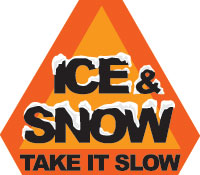
Safe Winter Travel
Winter conditions call for different driving tactics. Ice and Snow, Take it Slow - slower speed, slower acceleration, slower steering, and slower braking. Give yourself extra time to reach your destination safely. It's not worth putting yourself and others in a dangerous situation just to save time.
- Drive with your headlights on.
- Drive for conditions. Don't get overconfident with four-wheel drive. It won't help you stop any faster.
- Winter road conditions often result in longer stopping distances. Drivers should allow additional room between their vehicles and others.
- Slow down when approaching intersections, off-ramps, bridges or shady spots. These all have potential to develop black ice that makes driving hazardous.
- Avoid abrupt actions while steering, braking or accelerating to lessen the chances of losing control of the vehicle.
- Look farther ahead in traffic. Actions by other drivers will alert you to problems and give you extra time to react.
- Trucks take longer to stop. Don't cut in front of them.
- Avoid using cruise control or overdrive. Don't let your car make a bad decision for you.
- Stopping on snow and ice without skidding requires extra time and distance. If you have anti-lock brakes, press the pedal down firmly and hold it. If you don't have anti-lock brakes, gently pump the pedal. Either way, give yourself plenty of room to stop.
Safe Travel Around Snowplows
Snowplows are usually spreading anti-icing materials from the back of the truck and may need to stop or take evasive action to avoid stranded vehicles. If you find yourself behind a snowplow, stay behind it or use caution when passing. The road behind a snowplow will be safer to drive on.
- Don't crowd the plow. Snowplows plow far and wide-sometimes very wide. The front plow extends several feet in front of the truck and may cross the centerline and shoulders during plowing operations.
- Plows turn and exit the road frequently. Give them plenty of room. Stay back at least 15 car lengths (200 feet).
- On multiple lane roads, watch for snowplows operating in either lane.
- Snowplows can throw up a cloud of snow that can reduce your visibility to zero in less time than you can react. Drive smart. Never drive into a snow cloud - it could conceal a snowplow.
- A snowplow operator's field of vision is restricted. You may see them but they may not see you.
Your Tire and Chain Options
To qualify as traction tires, your tires must have at least an eighth of an inch of tread and be labeled Mud and Snow, M+S, All Season, or have a Mountain/Snowflake symbol. Because different types of winter tires perform best under different road conditions, your local tire dealer can help you select the best option. Remember, tire dealers are busiest before and during winter storms.
Vehicles over 10,000 gross vehicle weight rating (GVWR), including some larger passenger trucks, SUVs, RVs and vehicles towing trailers, must carry chains Nov. 1 through March 31 on certain state-owned roads.
For more information on Washington's tire and chain regulations, visit http://www.wsdot.wa.gov/commercialvehicle/chain_req.htm or http://apps.leg.wa.gov/wacWAC 204-22 Standards for Tire Chains.
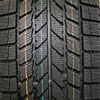 |
|
Stud Alternative - Approved This stud-less tire has over 3,200 sipes to help grip the winter roadway. The soft rubber compound helps in wet weather conditions, but is too soft for warmer, summer driving. |
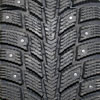 |
|
Studded - Approved
This studded tire has staggered studs designed to wear with the tire. While providing additional traction on snow and ice, studs wear down the roadway. |
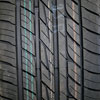 |
|
All Season - Approved
This all season tire is designed for everyday use. The rubber compound is suitable for all weather conditions. Siping (small slots cut or molded into a tire tread surface) would greatly increase this tire's traction on winter roadways. |
 |
|
Performance - Not Approved This performance tire is the most nimble tire and has the best response on dry pavement. It has the least amount of traction on winter roadways, making it strictly a summer tire. |
Traction Advisory
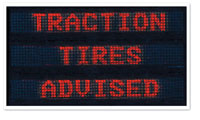
Traction tires advised - oversize loads prohibited. Oversize vehicles may be restricted from roadways during severe weather conditions.
|
|
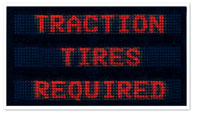
Traction tires required - Passenger vehicles must use approved traction tires. Chains are required on all vehicles over 10,000 gross vehicle weight rating (GVWR), including large passenger trucks and SUV's over 10,000 GVWR.
|
|
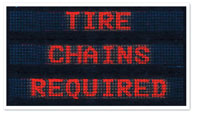
Tire chains required - except four/all wheel drive. In extreme weather conditions, the advisory may indicate chains are required on all wheel drive vehicles.
|
Know Before You Go
The WSDOT communications staff keeps in regular contact with members of local media, giving them the latest road conditions and trouble spots. You can find this information:
For more information visit the Frequently Asked Questions.